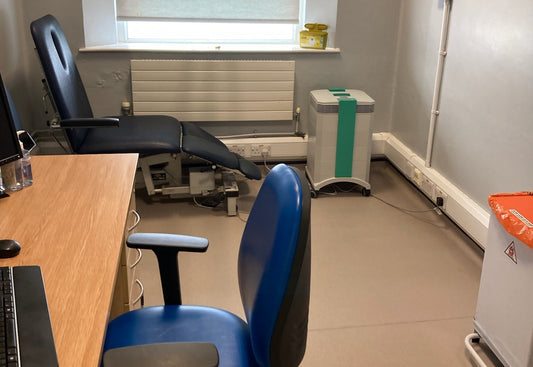Have you ever wondered how the air quality in your beauty salon is? Harsh chemicals are routinely applied to the hair, nails, and body. Hair is bleached with peroxide, acetone is an essential ingredient in nail polish remover and dihydroxyacetone (DHA) is frequently used in fake tan sprays. For the customer, a visit to the salon may be just an occasional treat or a weekly routine, however, exposure to poor air quality in your beauty salon can accumulate over time and result in a variety of health issues ranging from headaches to birth defects and even cancer. If good air quality is a requirement for customers then this is even more true for employees who are exposed on a daily basis. So the question is: How is the air quality in your beauty salon?
Chemicals used in beauty salons are subject to legal limits on air pollution such as COSHH (Control of Substances Hazardous to Health) regulations because they are harmful to humans. But a 2008 survey of over 200 hairdressing and nail salons in London commissioned by the Health and Safety Executive showed that less than half had a good grasp of the concept of COSHH assessments and kept a list of their products, noting those which could be hazardous to the health of staff and customers. Not complying with COSHH regulations is not only a potential danger to customers, but can also have legal and social repercussions.
The beauty sector, mostly dominated by small businesses, is growing fast and it’s fiercely competitive. Unfortunately, it tends to be the minority of salons that take appropriate preventative action against indoor air pollution. For example, a Health & Safety Executive report noted that employees in half of the nail bars they inspected were using dust masks to protect against artificial nail dust. But this is not a recommended method for controlling the dust produced by filing away at artificial nails. Nor will masks trap molecules of VOCs such as Methyl Methacrylate (MMA) or Ethyl Methacrylate (EMA) which are often used in artificial nail treatments.
There is a widespread ban on MMA in the United States, for this toxic chemical can cause permanent lung and liver damage through chronic exposure. This is not currently the case in the UK. In some artificial nail treatments, MMA has been replaced by EMA which is less toxic. In a Health & Safety Executive report, half the salons offering the treatments said they did not contain either MMA or EMA. The inspectors found this surprising because EMA is present in so many of these products. They, therefore, wondered whether salon workers did not, in fact, realise that they were using EMA in their products.
It may take some time before the ingredients in products coming into salons are (relatively) free of health hazards. In the meantime, salon owners and managers should protect employees and customers through the use of adequate beauty salon air cleaning solutions. A simple way of doing this is to invest in a HEPA Gas & Chemical Air Cleaner to improve the air quality in your beauty salon. These systems can be configured with an extraction attachment so that both particle and chemical contamination is captured at the source - as recommended by the Health & Safety Executive.




